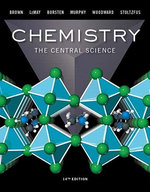?(a) Under what condition will the enthalpy change of a process equal the amount of heat transferred into or out of the system? (b) During a
Chapter 5, Problem 5.34(choose chapter or problem)
(a) Under what condition will the enthalpy change of a process equal the amount of heat transferred into or out of the system?
(b) During a constant-pressure process, the system releases heat to the surroundings. Does the enthalpy of the system increase or decrease during the process?
(c) In a constant-pressure process, \(\Delta H=0\). What can you conclude about \(\Delta H\), q, and w?
Text Transcription:
\Delta H=0
\Delta H
Unfortunately, we don't have that question answered yet. But you can get it answered in just 5 hours by Logging in or Becoming a subscriber.
Becoming a subscriber
Or look for another answer
